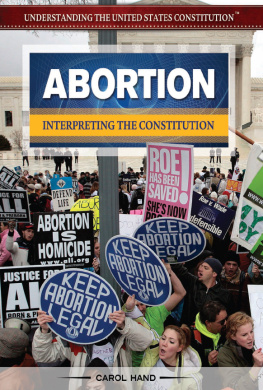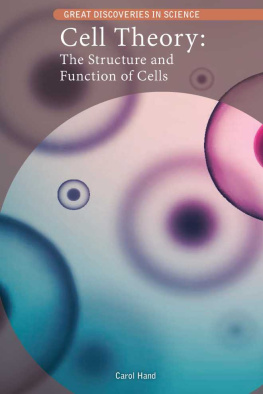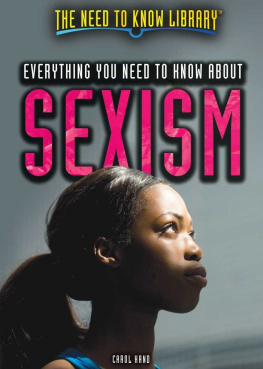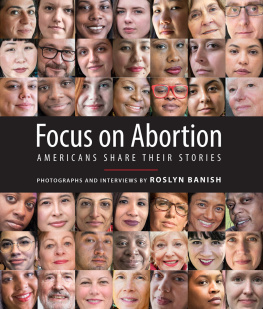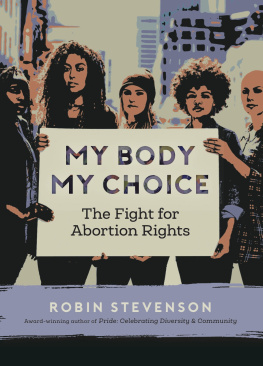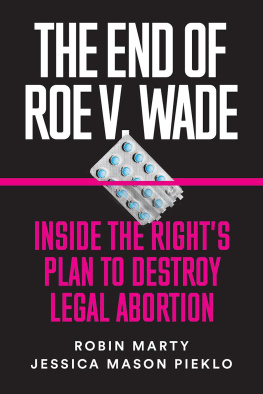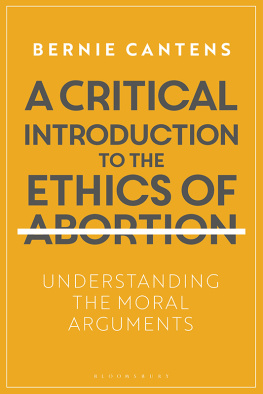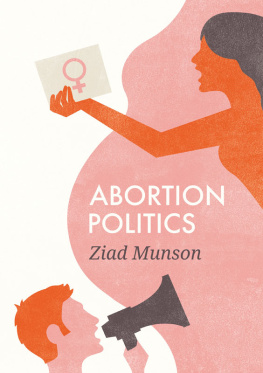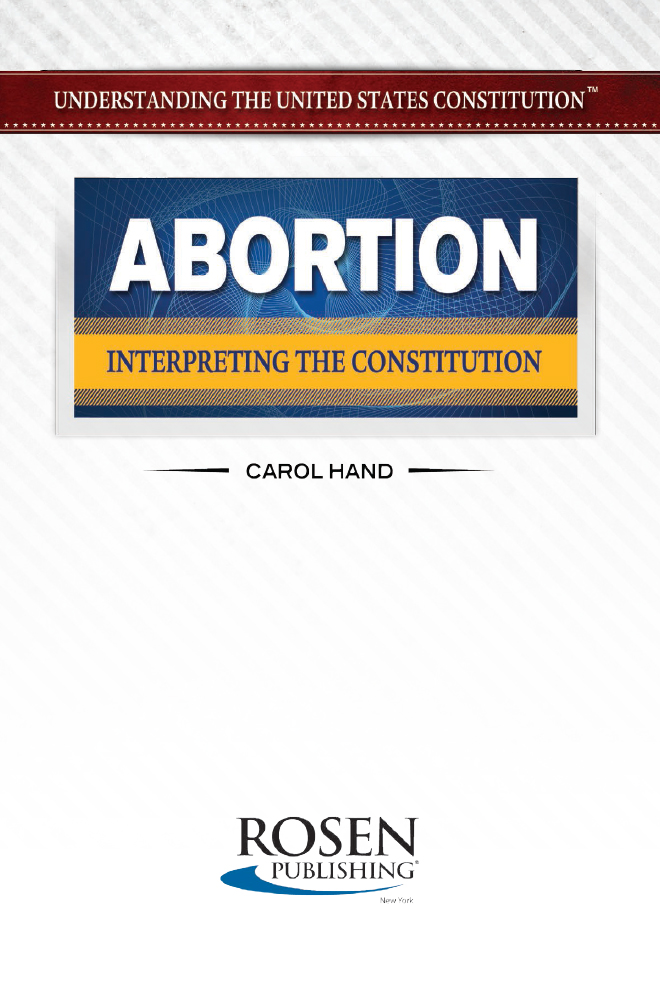
Published in 2015 by The Rosen Publishing Group, Inc.
29 East 21st Street, New York, NY 10010
Copyright 2015 by The Rosen Publishing Group, Inc.
First Edition
All rights reserved. No part of this book may be reproduced in any form without permission in writing from the publisher, except by a reviewer.
Library of Congress Cataloging-in-Publication Data
Hand, Carol, 1945-author.
Abortion: interpreting the Constitution/Carol Hand. pages cm(Understanding the United States Constitution)
Includes bibliographical references and index.
ISBN 978-1-4777-7510-3 (library bound)
1. AbortionLaw and legislationUnited StatesJuvenile literature. 2. Constitutional lawUnited StatesJuvenile literature. I. Title.
KF3771.H36 2014
342.73084dc23
2013041607
Manufactured in the United States of America
INTRODUCTION

Texas state senator Wendy Davis, seen here in July 2013, made national news when she filibustered the Texas Senates highly restrictive abortion bill in June 2013.
I t was Tuesday, June 26, 2013. The Texas Senate was in the final day of a thirty-day special session when Senator Wendy Davis began a filibuster that was to last nearly eleven hours. She spoke nonstop against a bill that would close thirty-seven of the states forty-two abortion clinics and otherwise greatly restrict abortion in the state. Republicans strongly supported the bill, and Democrats (including Davis) strongly opposed it. In the Republican Senate, the bill was expected to pass easily. But Davis, with the backing of Senate Democrats and women across the state, hoped to delay (and if possible, prevent) the vote.
While she was speakingas long as she stayed on topicthe Senate could not vote. During the filibuster, Davis had to go without food, water, and bathroom breaks. Senate rules did not permit her to sit down or to lean on anything for support. As Daviss filibuster progressed, people around the state and country began to take notice. The area within and outside the Senate chamber filled with both supporters and protesters. Daviss Twitter following increased from 1,200 on Tuesday morning to more than 20,000 by Tuesday night. Approximately 180,000 people watched the filibuster live online.
Finally, about ten minutes before midnight, the Republican majority forced a vote to end Daviss filibuster. More than four hundred supporters in the Senate chamber shouted and chanted until midnight to prevent the vote. When a vote was finally taken, the measure passed 19-10. But the vote occurred after midnight (when the special session ended), so it was invalidated. Davis and her supporters had wonfor the moment. Texas lieutenant governor David Dewhurst called the demonstrators who helped prevent the vote an unruly mob. Senator Juan Hinohosa, a Democrat, said, This is democracy. They have a right to speak.
Texas governor Rick Perry, a Republican who strongly favored the bill, immediately called a second special session. On July 13, the bill passed by a vote of 19-11. During this session as well, thousands of supporters and protestors mobbed the Capitol and tried to testify. As the vote was cast, protesters outside the Senate chamber shouted Shame! Shame! Governor Perry called the bill Texass final step in our historic effort to protect life.
The Texas antiabortion bill is one of the strictest in the country. It bans abortions after twenty weeks of pregnancy; requires doctors to have admitting privileges at hospitals within 30 miles (48 kilometers), which is difficult in highly rural Texas; and requires clinics to meet the same standards as hospital-style surgical centers (renovations are too expensive for most clinics). Texas is one of many states currently enacting highly restrictive abortion laws, in spite of several U.S. Supreme Court decisions affirming womens right to abortion. A fight many thought they had won with the Supreme Courts 1973 Roe v. Wade decision had boiled overthis time in state legislatures.
CHAPTER ONE
LIFE BEFORE ABORTION RIGHTS
F or many years, the issue of abortion has divided people into two strongly opposed groups. Those favoring abortion rights (the pro-choice group) feel that women should be free to make these personal and medical decisions with the help of their doctors. The antiabortion (prolife) group frames the issue as a moral decision and defines abortion as murder. This division differs from the historical view of abortion in America. Both sides will be discussed here. First, a little history.

Pro-life and pro-choice advocates come face-to-face in a Washington, D.C., demonstration on January 23, 2006, as thousands of demonstrators mark the thirty-third anniversary of Roe v. Wade.
ABORTION AS A MEDICAL PROCEDURE
When the U.S. Constitution was adopted in 1787, abortion before quickening was not only legal, it was taken for granted. Abortion was treated as any other medical procedure; remedies were advertised openly. Usually the procedure involved taking herbs. Later, commercial remedies (some poisonous and even fatal) became available. The first laws regulating abortion, in the 1820s and 1830s, banned these poisonous abor-tifacients, but not abortion itself.
The field of womens reproductive services changed in the mid-1800s, when university training became required for physicians. Previously there were few restrictions on who could practice medicine. Midwives, homeopaths, and other irregulars (quacks and people without university training) provided most contraception, abortion, and childbirth services. With the formation of the American Medical Association (AMA) in 1841, physicians realized that restricting reproductive services to physicians only would give them financial and social benefits. The doctors pressed for legislation to outlaw irregulars from performing these services. They joined forces with a new political party, the Know-Nothings, whose beliefs combined anti-immigration (then called nativism) and religious bigotry. In those days, the typical abortion patient was a married middle- or upper-class white Protestant woman. Because few other methods of birth control were available, the Know-Nothings suspected that Protestant women were using abortion as a form of birth control and therefore sought to criminalize it. Know-Nothings feared they would lose political control if the flood of new immigrants, particularly Irish Catholics, out-reproduced the native white Anglo-Saxon Protestants.
ABORTION AS A CRIMINAL ACT
In the late 1800s, individual states began to ban abortion. By 1910, men in medicine and politics had succeeded in criminalizing abortion in all but one state. Abortion was legal only when a physician decided it was necessary to save a womans life. Doctors painted abortion as immoral and dangerous. Some women also joined the movement. Most of them supported social purity campaigns to restrict pursuits they considered immoral, including gambling, drinking, prostitution, and sex for purposes other than procreation.
Legally banning abortions did not prevent them. An estimated two million abortions were performed annually during this time (about seven to eight times more per capita than occur today). Doctors and midwives continued to practice the procedure with few repercussions. Historian Leslie J. Reagan feels the main effect of criminalizing abortion was to expose and humiliate women, thereby helping maintain the strict gender roles of the time.
Next page
